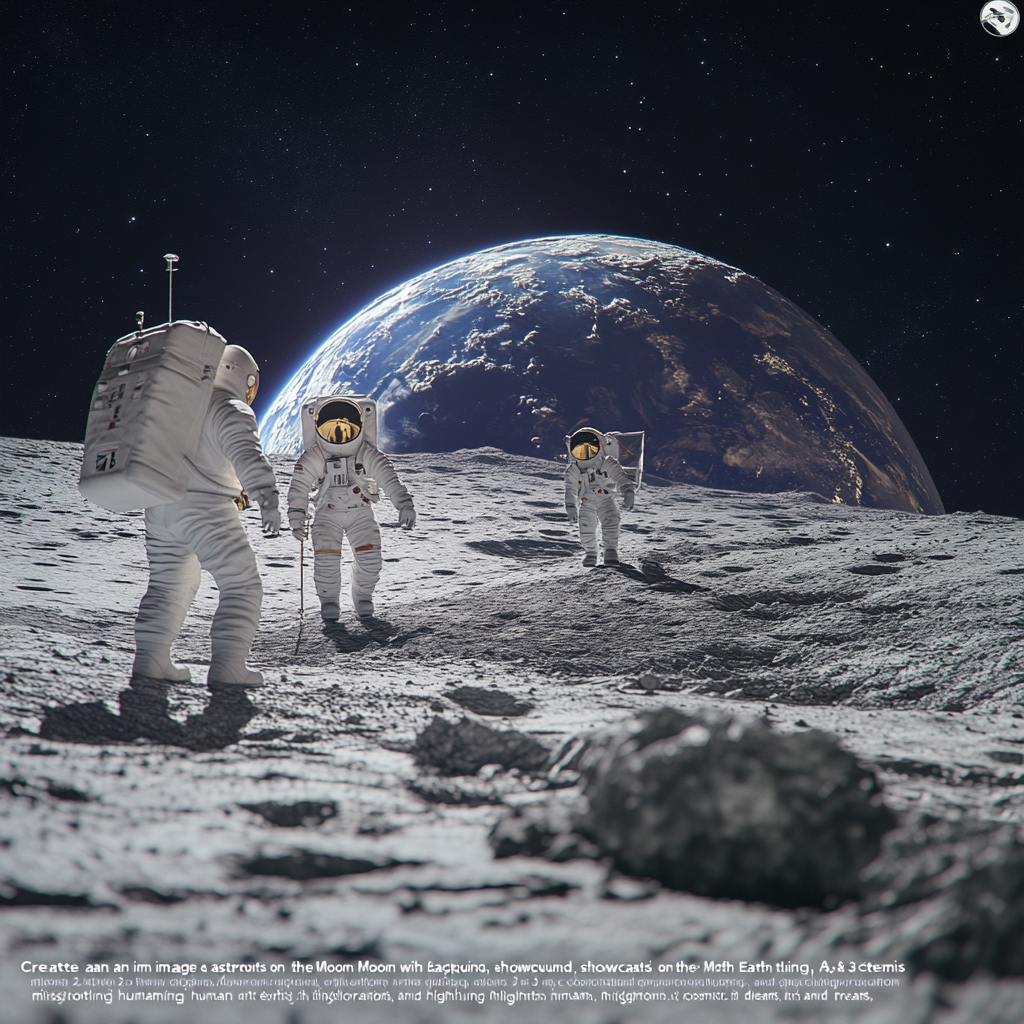
NASA Shifts Artemis 2 and 3 Timelines: Moon Mission in 2026, Landing in 2027
In the grand theater of space exploration, where hopes soar as high as rockets, delays are the uninvited intermissions that chill the audience's anticipation. NASA's Artemis program, singing a chorus of ambition to return humans to the Moon, recently found itself caught in this all too familiar narrative, shifting the spotlight on two main performances: Artemis 2 and Artemis 3. Let’s dive into the nitty-gritty of what this means for space enthusiasts and the curious onlookers tuning in from Earth with eyes wide open and dreams even wider.
What exactly is the Artemis program? Think of it as NASA's golden mission to once again dance upon the Moon's surface, a place that stirred human imagination in the era of Apollo and continues to captivate our collective science fiction fantasies. The missions are structured like a multifaceted jewel, each cut reflecting a unique aspect of lunar exploration, scientific discovery, and, let’s be frank, the rekindling of national pride.
Looking specifically at Artemis 2, this mission was intended to be the first crewed flight of the Orion spacecraft, taking four brave souls on a ten-day journey around the Moon, originally scheduled for September 2025. But guess what? The date has now slipped to April 2026, as gracefully as a lunar lander sinking into the fine dust of the Sea of Tranquility after a tenuous touchdown. If one contemplates the essence of excitement surrounding this mission—think of that first breath of fresh cosmic air, the thrill of gazing upon Mare Imbrium from a window—one can’t help but feel a twinge of disappointment at the delay, yet it is a necessary step on this winding path.
Now, onto Artemis 3—eye-catching and ambitious, as this mission will make its mark by landing humans, notably our first woman and first person of color on the Moon, a moment steeped not only in scientific achievement but in the very fabric of human history. Initially slated for late 2024 and then bumped to September 2026—oh, the calendar dance—this groundbreaking mission is now set for mid-2027. One can almost visualize the astronauts chomping at the bit, all geared up in fancy space suits, glancing at the calendar each day as they eagerly await their lunar debut.
What’s driving these delays, you might wonder? The culprit here is, alas, a troublesome heat shield on the Orion spacecraft, a vital protector during the fiery re-entry process that would have made Icarus sweat. Nope, no candle-like wax wings for astronauts; they rely on advanced engineering, which, as it turns out, ran into some heat shield erosion issues that needed serious looking into. NASA found the source of the trouble, but these investigations are not a fast-food process. It’s more of a slow-cooked gourmet meal, requiring time and precision.
Additionally, the baggage accompanying these delays includes pesky valve issues within the life support system and developmental hiccups with SpaceX’s Starship Human Landing System (HLS). Talk about a celestial game of Jenga! One thing out of place, and the whole structure might topple down.
With these delays, what allure can we expect in the revised timeline? The clock is ticking, and here it is: Artemis 2—the crewed flyby around the Moon—is now getting ready to take flight in April 2026, like a contestant donning its freshest tuxedo for the big space ball. Meanwhile, Artemis 3, the grand lunar landing, has spun its own dance card to mid-2027, a date that promises to echo through time, reminiscent of those delightful first footprints left by humanity on alien soil.
The anticipation surrounding these missions resembles warming up for an epic concert. There's a buzz in the air, a sense of something big brewing on our horizon: preparations are being made for additional equipment to be sent to the Moon, including a nifty little unpressurized rover set to assist astronauts exploring our celestial neighbor. Imagine, two astronauts bounding across the Moon, while their remote-controlled buddy scoots along, gathering data and sending back images that could make any sci-fi lover's heart race.
NASA isn’t simply sitting back and waiting for everything to fall into place either. They’re evaluating alternative plans, such as a potential crewed visit to the Lunar Gateway. If the Starship decides to play coy and isn’t ready in time, they’ll just pivot and keep going—an agile dance move in the face of setbacks. It's a reminder that even in space, where things are sleek and futuristic, creativity and adaptability reign supreme.
In wrapping this cosmic saga, let’s remember that while navigating toward the Moon may seem plagued with obstacles and unforeseen delays, every trip is part of this odyssey towards not just lunar exploration, but better safety protocols and scientific advancements. Each delay translates to more meticulous planning, a shoutout to the kind of tenacity that truly makes humanity a stellar force in the cosmos. So, let’s keep our eyes turned skyward and our hearts brimming with anticipation for those future days when we’ll collectively erupt in joy at the human spirit’s next great leap.
Want to stay up to date with the latest news on NASA's Artemis missions and other space exploration endeavors? Subscribe to our Telegram channel: @channel_neirotoken. Because the best adventures are shared, and we're just getting started on this cosmic journey!

